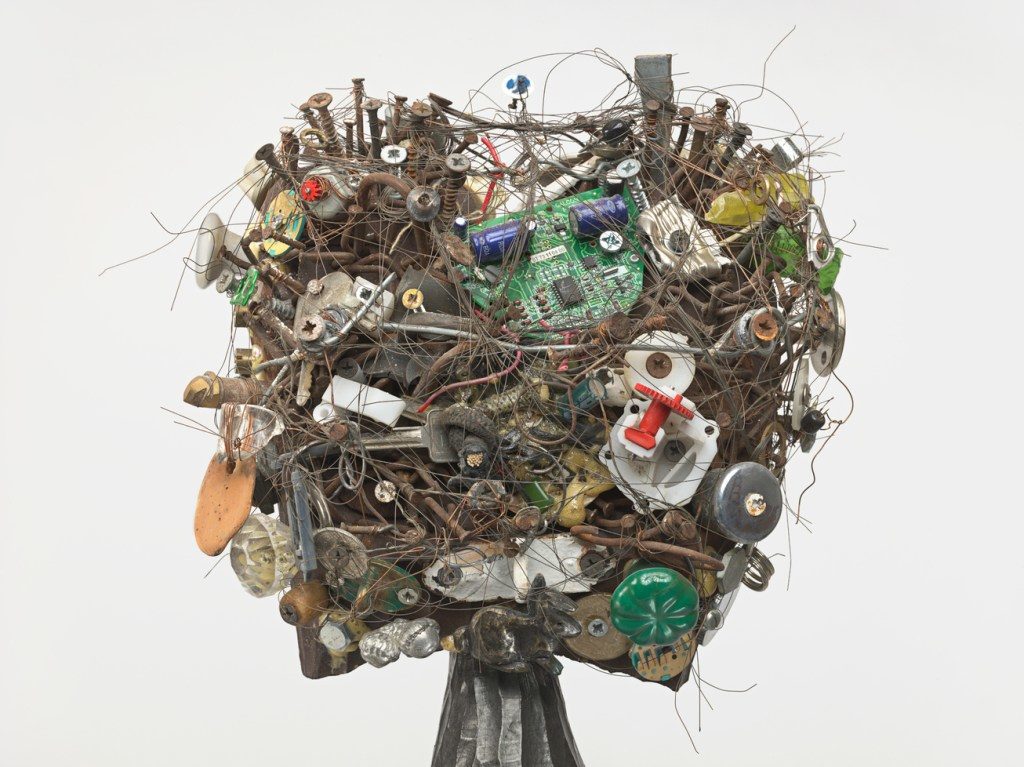Baltimore Museum of Art (BMA), Baltimore, MD, United States
22 Apr 2018 - 29 Jul 2018

Jack Whitten, Detail of “Lucy,” 2011 (black mulberry, mixed media, Phaistos stone, mahogany, metal I-beam).
In “Odyssey: Jack Whitten Sculpture, 1963-2016” the Baltimore Museum of Art (BMA) presents a previously unknown aspect of the practice of the painter and sculptor Jack Whitten, who passes away earlier this year. Opening on April 22, 2018 the show is co-organized with the Metropolitan Museum of Art in New York, and will feature 40 sculptures Whitten made over the span of five decades in Greece.
The exhibition is curated by Katy Siegel, senior programming and research curator at BMA and Kelly Baum, contemporary art curator at The Met.
“It’s thrilling to share an unknown aspect of a contemporary master, especially when it reveals so much about the artist’s vision and process,” said Siegel in a statement. “Whitten’s sculpture renders a new understanding of American culture as the product of intertwined rather than opposed African and European traditions. And in doing so, it positions Black identity as central to a broad, cosmopolitan humanism.”
Odyssey: Jack Whitten Sculpture, 1963-2017 presents examples of works that inspired Whitten with carved figures from Cote d’Ivoire, Democratic Republic of Congo, Gabon, Guinea, Mali, Nigeria, and Sierra Leone drawn from the BMA’s outstanding collection of African art; as well as objects from Cyprus, Crete, and the Peloponnese from the collection of the Walters Art Museum in Baltimore. A gallery dedicated to Whitten’s Black Monoliths, a series of paintings honoring African American cultural figures, reveals the connection between Whitten’s paintings and his previously unknown sculptures, and marks the first time these works have been exhibited together. His subjects for the Black Monolith series include W.E.B. Du Bois, Muhammad Ali, and Maya Angelou, among others.
Born in Bessemer, Alabama in 1939, Whitten’s work is informed by growing up in the Jim Crow South, and his experiences of historical and personal struggles for freedom. He originally planned a career as an army doctor and began pre-medical studies at Tuskegee Institute in Alabama, where he was inspired by George Washington Carver’s legacy as a scientist, inventor, and artist. Whitten became increasingly involved in the growing Civil Rights Movement, attending the Montgomery Bus Boycott to hear Martin Luther King, Jr.’s vision for a changed America. He also participated in the Civil Rights demonstrations in Baton Rouge, Louisiana, while studying art at Southern University. Whitten’s introduction to African art came when he visited The Met and Brooklyn Museum in New York as a young man in the summers of 1958 and 1959. The encounters left a lasting impression, as he believed African sculpture was a vital inheritance for artists working in the African diaspora. Whitten moved to New York in 1960 and remained there following graduation from Cooper Union in 1964, studying the collection of African art owned by his first art dealer, Allan Stone, and embedding himself both in the downtown NYC painting scene, and in the uptown circles of Black artists like Romare Bearden. Whitten made sculpture in private, even as he became known as an important and boundary-breaking painter. He experimented with the materiality and techniques, employing an array of acrylic polymers and exploring the variances in viscosity, clarity, brilliance, and elasticity. To make his paintings, Whitten has used an inventive and broad range of materials such as iron oxide, dry pigments, crushed Mylar, ash, bone, and blood. The materials and their handling all carry profound metaphysical and social meaning.
The African American painter and sculptor Jack Whitten passed away on 20 January 2018, at the age of 78.
Following its presentation at the BMA, Odyssey: Jack Whitten Sculpture, 1963-2017 will be on view at The Met Breuer September 6 – December 2, 2018.
.